Ep. 83: Messy Human Expectations
Your dog is tackling a search and you just don't think they are going about it the right way. They are coming off the containers or vehicles, or perhaps they are attempting to go outside the barrier cones for an exterior search. Silly dog, you think to yourself, as you step in to direct them, illustrating the "right" way to go about searching this space.
In this episode, we discuss how our human expectations can inject unnecessary conflict into our Scent Work searches. Basically, how it is oftentimes best to simply trust the dog, as they can actually interact with and experience the odor we've tasked them to find. However, ceding this control and offering this trust can be exceedingly difficult and challenging for handlers, especially when the dog's choices in the space directly counter the handler's human expectations.
Speaker:
- Dianna L. Santos
TRANSCRIPT
Dianna L. Santos (00:01):
Welcome to the All About Scent Work Podcast. In this podcast we talk about all things Scent Work. That can include training tips, a behind the scenes look at what your instructor or trial official may be going through and much more. In this episode, I wanted to talk about the way that dogs may need to use the environment to find their hides and how this can be stressful for us as handlers. Before we start diving into the podcast episode itself, let me do a very quick introduction of myself. My name is Dianna Santos. I'm the Owner and Lead Instructor for Scent Work University, Dog Sport University and Pet Dog U. These are online dog train platforms. They're designed to provide high quality dog train instruction to as many people as possible, and we're very fortunate to have a client basis worldwide. For Scent Work University in particular, we provide online courses, seminars, webinars, and eBooks that are all focused around Scent Work.
(00:45):
So regardless of where you are in your sniffy journey, we likely have a training solution for you. It means you could be just starting, trying to develop some more advanced skills, getting ready for trial, or you may already be trial and try to work out some of the kinks. And we probably have something that can help you and your dog succeed in your sniffy journey. So now that you know a little bit more about me, let's dive into the podcast episode itself. So in this episode I wanna talk about the dynamic that can happen during a search that can be rather challenging for handlers to wrap their heads around and can be very stressful. And that's when dogs are investigating the environment. But it's not because they're distracted, it's not because they are giving up on the search. It's not because they've found other things, it's because they're actually trying to work out the odor puzzle.
(01:30):
But we are so focused on we must search here because we cannot experience odor, that it just causes us issues. This is particularly true at trial. So let me give you a scenario to start off with. We'll say that your dog is working a container search and there are, you know, either a row, a single row, multiple rows, whatever. There are containers within the space, you know where the containers are, they are visual there for you and your dog, . There's nothing else in play. This isn't a container plus something else, it's just containers. So already in our human brain, this should be easier because the hide, if you're using target odors, your birch, your anus, your clove, whatever is within this container, right? Dog, go forth and find the container that has the smelly thing in it. Like it doesn't get much more clearer than this , yet the dog goes into the space and maybe they don't s sniff the containers at first, or maybe they do, maybe they do one little round, one little pass and then they're sniffing other things.
(02:32):
You know, they're sniffing the wall or they're sniffing. If you have cones in the space, they're sniffing the cones. Or if there's other things that make up the space at the search areas in, they're sniffing those things and you're like, no, no, no, no, no. Stop that , stop doing whatever it is that you're doing. Just sniff the containers. What actually could be happening is that there could be odor flowing from your container to these landmark items, what I'd like to call them inside the search area. And the dog is following odor to where it's hitting and interacting with something to then turn around and then get right to source. But because of us , that whole thing is interrupted because we are so focused. You must keep your face smashed onto containers and that just simply may not be the way that the odor is working.
(03:21):
We also, from our movement and the dogs movement, we may be disturbing what the odor is doing and some of that we can't help, right? We need to be able to follow with our dogs. Our dogs have to go through and sniff all the containers, but all of that is gonna be moving and dragging odor and doing all these things. I see this a lot, particularly with containers where people stress out because their dogs are coming off, quote unquote coming off the containers in order to really, they're working odor. Like if you look at them, they're not distracted, they're not picking up on something else they're working. And if you just gave them that nanosecond to do that, they make a beeline to their odor container. But that's not the way that it's supposed to look. to our human eyes. And this can cause a lot of issues and cause a lot of conflict between the dog and the handler because again, the dog is the one first, the one that has the job of finding the odor.
(04:16):
The dog is the one that can experience odor. The dog knows what the odor is doing in the space. We can't do any of those things, right? This is where there can be a real issue with the partnership between the dog and the handler cuz the handler is injecting human expectations about how this should all work onto the dog. And dog is like, did you maybe wanna get on all fours and stuff this out, ? And that all depends. That reaction really depends on the relationship between the dog and the handler. There are some dogs that clearly just are flippant about it and be like, oh well I didn't know that you were actually a dog that just didn't have fur and stood on two legs. By all means , I'm just gonna do something else now because I don't want you controlling how I do this.
(05:02):
But a lot of dogs instead it'll be more of a, oh, I didn't, oh I guess we weren't playing this game. You let me know what game we're playing cuz I just want to be right. If you want me to like walk next to you and look at you, that sometimes gets me cookies. Does that work? And then the person gets really upset because now the dog doesn't look like they're sniff anymore because they're not. And it's just, it's a mess. This isn't just something that happens in containers, this happens in all of us search elements where we just forget as people how dynamic and complicated odor can be because we can't see it because we can't smell it because we can't experience it. If there was a way to have this during an actual search that we could actually, if there were like some glasses that we could wear , you know, while we were training or something where we could see where all of this was going, it would make so much more sense to us.
(05:56):
And I think it would make us all much better handlers because when our dog did shoot off to you know, investigate that vertical space or go into that alcove or whatever and then turn around on a dime and come and make a beeline to their hide, instead of us trying to interrupt all of that, we would just be standing in awe and going like, oh, of course, of course they're doing that, that makes perfect sense. But because we don't have those magical glasses yet, maybe I should make those . That's all. You just have to remind yourself of that as a human, as a person, as a handler. And when you're at trial, that's really, really, really hard to do because you've already got all of the trial stress, you've got the time constraints, you've got all this other stuff going on. It's gonna be really hard for you to not be like, okay, the hides can only be at this height within this parameter and this and that and the other thing.
(06:54):
Why are you going over there? That doesn't make any sense and it may make perfect sense as far as what the odor is doing. So let me give you another example to try to help this make a little bit more sense. Let's say that you are trialing, but this time it is an exterior search. So for the exterior search, they have their lovely little boundary cones out letting you know you only need to search this area, you know, you know, just search the whole park or whatever it is. You just need to search in here. Those cones are just there for your information, right? There's not gonna be a hide in the cone or anything like that, but it's just letting you know you guys just need to search here. But something that almost every single team at some point is going to run into is the human instinct that that is like lava .
(07:39):
The other side of those cones is like death. We can't possibly cross over those cones. There's lasers and things over there, but odor doesn't adhere to the cones. Odor can go beyond the cones and oftentimes does. So as a trial official, very early in my career, one of the searches I had set up, it turned out that that's exactly what was happening with the odor. That if you allowed your dog to go, I don't know, not even two or three feet away out of the search area just cuz of where the wind was going, they could then turn around and could make a beeline to this hide. It wasn't even an issue if you didn't let them do that, it didn't go so well, right? They really struggled like this is the kind of thing that we just have to recognize. And I'm sure people could argue like, well you know, as a trial official you shouldn't be doing that kind of thing.
(08:32):
But there's also nature , right? There's going to be things that happen that even in training you may have that issue where you may set out a hide and you have your very specific search area, but the dog just seems constantly, they're like, I can't seem to figure out how to get back to source. I need to follow this plume a little bit. Would you let do that , right? It's so inhibiting to the dogs and if you had just let them cut off, off on off leash and we weren't involved at all, they would be able to figure it out in, you know, five nanoseconds without a problem. But because we're micromanaging with these humans expectations of how this all will work, as if there's like these glass invisible walls, on the other side of those boundary cones, keeping all the odor in, it's just not true.
(09:25):
We want to remind ourselves of these things and I think that doing training setups, practice setups with our dogs and videoing can be very, very, very helpful. Now there is something to be said for dogs who rely way too much on the environment where they're constantly going out to see where odor is going to then come back to source. There's extremes to all of these things and love is learning and skills and time and miles trying to work on efficiency is a perfectly fine thing to do. Vehicles are a really good example of that where odor is consistently shooting off of the vehicles in all different directions. And depending on where your vehicle is parked, it may have to travel a while, for it actually hits something that can provide some real meaningful odor information to the dog, si be able to come back and birth their way back into source.
(10:19):
Having setups on vehicles where you have lots of hides and the dog is, you know, incrementally and the dog is able to figure out like, oh I can actually stay a little bit closer to the vehicle in order to find where my hides are. The vehicle itself is really productive. I don't need to do this bouncing around thing of trying to figure out landmarks in the environment to get back to source. I think that that's a really great thing to do too. So there is a give and take in all this, right? You can through training, introduce different skill sets as far as training preferences. I think to dogs of here is this scenario here is this high placement. How can you solve it with the hope that they choose one path over another ? But again, I say that with the caveat of it simply shouldn't look the way that we want it to look if we aren't taking into account how complicated and dynamic odor is, it's not just staying where the hide is.
(11:19):
So even for a vehicle search, I am very strongly of the opinion that if a dog needs to come off a vehicle for a couple of steps, I have zero problem with that , like at all. Particularly if there are things around the vehicle, you know, if they're, if it's parked next to a building or some vegetation or standing water, I don't care, , that's fine, it makes sense. But if the dog is like trying to go, you know, 15 feet in order to hit a tree to come back, okay, well now you know, we can do some training around that. But I wanted to go out this episode because this is a consistent thing that handlers struggle with and for good reason. There's no reason why we as humans wouldn't think super visual either with boundary cones either, you know, the walls of a room, there are containers, there's a vehicle.
(12:09):
And to us, I know in training I place this little metal tin or a straw or a tube or whatever that has a thing I want my dog to find inside of it. I put it there , go find that thing. But the fact of the matter is that your dog may do the same exact thing when they're hunting just for a hotdog. And this is why I think using things like primary can really help kind of dispel some of these issues that people may have with getting their brains wrapped around this whole concept. Even if you had nothing formally sent Scent Work related, maybe you have a dog who loves toys and you hide one of their toys, it could be inside, can be outside, it doesn't matter. Watch how they work it. I can almost guarantee you that they're going to go to the edges of those odor plumes where the toy is emanating odor in order to get back, right?
(13:00):
They're going to be sniffing all the same kinds of landmarks and things that they would if it was a hide. And that can really help kind of jar you from your human expectation. Be like, oh , this is about everything. This isn't just a birch thing, it's, it's the way that odor works and the way that our dogs kind of sorted out. So I just wanna get people thinking about this so that we're not dictating to the dog how it is that they should be doing this because it's awful presumptuous of us to basically tell the Einstein, as far as odor is concerned, how it is they should be doing it. There's, I think the want and the desire, particularly if you're interested in competition, to have a certain look, a certain approach, a certain level of efficiency and so on and so forth.
(13:50):
Cause oh that's time those seconds , right? But I think it's wholly unfair to the dog and it just kind of, it's rude really to be like, okay, yeah, no I'm, I, I know best about this. And the dog's like, are you sure? Because you don't seem to be very good at this whole sensing thing. your nose doesn't seem to be working as well as mine. So I just wanna get people thinking about this. You know, again, video, video, video, I cannot say it enough. I know that I, I harp on this all the time, but truly it will give you so much of a better perspective of what's going on. Watch other videos, see what other people are posting with their dogs as far as you know, uh, different searches if you are in class or if you are practicing with front and scene laws of dogs.
(14:40):
Search in person helps too. Absolutely. But the great thing about video is you can see it over and over and over and over again. You can slow it down a lot of things. If you post a video, a bunch of Facebook or YouTube, they have a slow speed setting. So you can really like basically see like step by step by step how the dog is working this out and really just experiment and play. You know, that's what training is supposed to be as far as I'm concerned. It's just opportunities to be like, okay, well you know, they're, we're working on skills, but now I also wanna, I wanna say like what happens here , it's all because we can't experience it. We don't know. We have some guesses, we have some educated assumptions, but we don't know dog is the one that tells us.
(15:25):
So I just wanted to put this out there that when we are tackling these searches to remind ourselves that odor is very dynamic, it's very complicated. It's going to be interacting with the totality of the space and it's extraordinarily likely that your dog may have to investigate that space in order to get really valuable odor information to then be able to make a beeline back to their hide. That applies to all of the different search elements. Doesn't matter what it is. Interiors, exteriors, vehicles, containers, buried handler discrimination, it does not matter. That's just the way the odor works. So if your dog is not plastering their face to every single container, if they're not plastering their face to the vehicle, if they come off a little bit, in my opinion, not a problem. , right? If the dog knows what they're hunting for, and that is a very important caveat, they know what they're hunting for, they find it valuable, they're trying to sort out the puzzle, then let them do that.
(16:25):
I don't see what the point is of making it look so that it's flashier to people. I just want it to be effective. I don't care. And if you time it, the dog who's has the handler is leading the search and they, you know, they're pushing their dog's head onto the, the vehicle or they're keeping their nose on the containers. If you were to compare that with a team where the handler instead allowed the dog to lead the search, you're supporting the dog. Not that I'm doing anything, they're doing plenty. Team B more often than not is gonna find the hide faster than team a . And that's just because the dog is able to sort out the odor puzzle easier. It may not look the way that we expect it to look, but that doesn't matter at the end of the day. I know that's the case because when I was running my boy valor, he would have some really amazing timed searches in trials where he would blow everyone away.
(17:20):
And it wasn't because he was, you know, doing it the way that anyone expected. , I can remember this one container search that we did that I think he found it in less than two seconds. It was ridiculous. The start line was in a doorway and there were two rows of containers, but we were facing the rows at like, we were like a container two or something. So he had to crossover a row to get to another row of containers and he just made a beeline to it, . It was just, it couldn't have been faster if he tried. And the reason being is that he was able to get the odor at the start line. He didn't need to check out all the containers. He didn't need to be slammed up up against it. You know, it's so I can appreciate this because I've experienced it on the other side of the leash.
(18:08):
Be like, okay, like just trust your, that's what trust your dog I think really means is that they're the ones that can experience the odor. They're the ones that know how to work all this stuff out. And if we inject ourselves too much with our human expectations about how this is supposed to work or how this is supposed to look, it can really get in their way because it's not the way that odor looks, it's not the way that odor works. They know because they're the ones with the nose . So something to think about. Anyway, let me know because again, we'll be posting this episode as always up on our social medias and stuff like that, what you think. Do you ever find yourself in this situation where you and your dogs seem to be coming at this from different angles where there may be some conflict where your dog wants to do one thing and you want them to do another?
(18:54):
And as far as like how you're actually tackling the search, do you think that this has any legitimacy at all? You're like, no, this is stupid . We need do containers. You do it one way, we do a vehicle to do it another way. You have to stay inside the boundary cones for exterior searches. You know, we'd love to hear from you and also let us know if you have any other topics that you're interested in us covering for our podcast. We definitely wanted to make sure that we are posting things that you all are interested in. Again, we are scheduled to have a very wonderful round table coming up very, very soon. So I'm excited about that. Trying to get some more speakers before the end of the year, but everyone's very, very busy coming up to the end of the year. So it may not be until 2023, but that's okay. And yeah, there's lots of super awesome sniffy fun coming your way, so I hope you all enjoy it. All right guys, thanks so much. Happy training. We look forward to seeing you soon.
Join Our Newsletter
Stay up to date with all the happenings at Scent Work University, including the release of new online courses, seminars, webinars, eBooks and receive exclusive promotions and discounts!
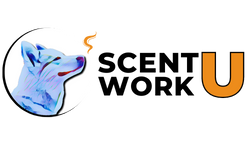
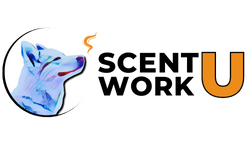
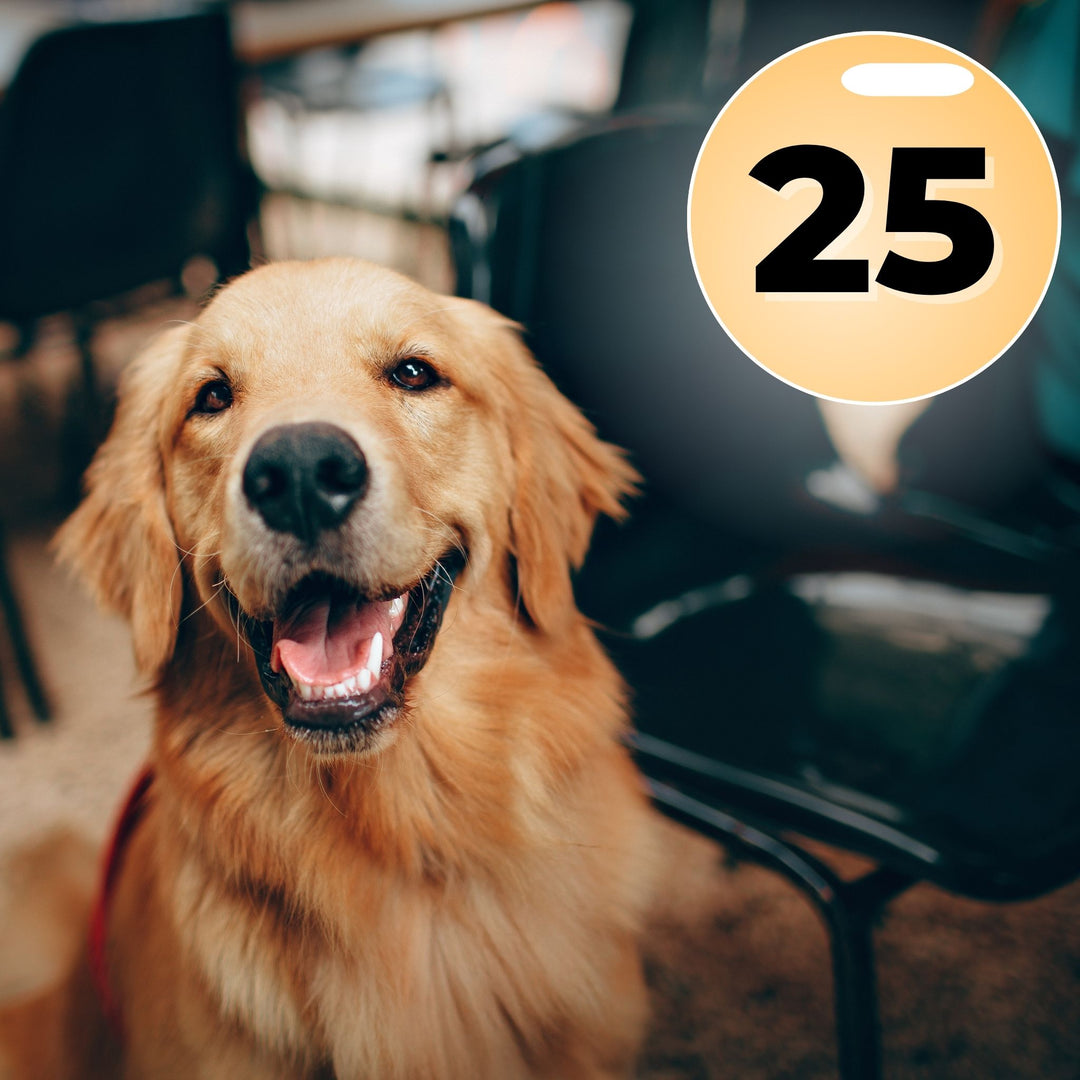
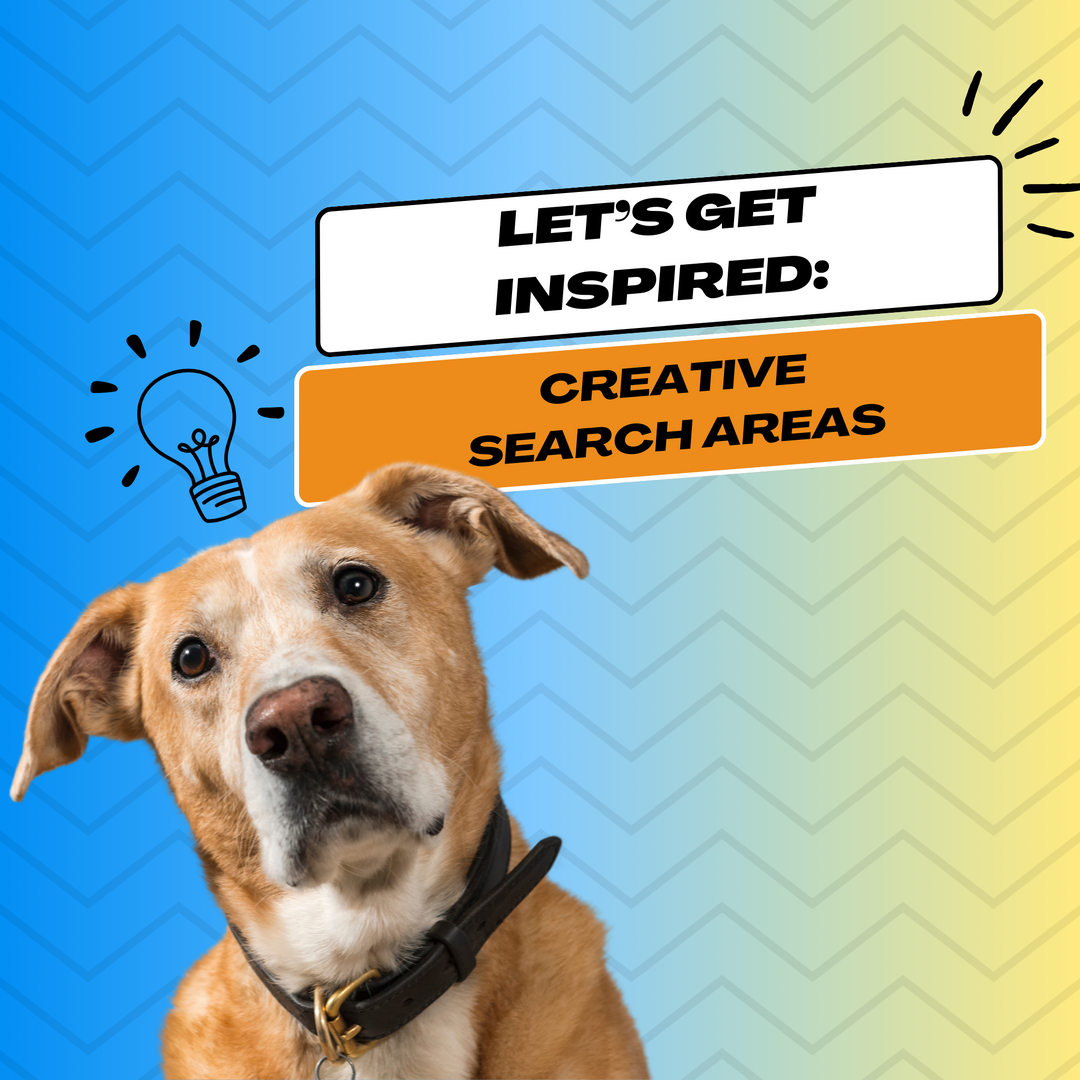
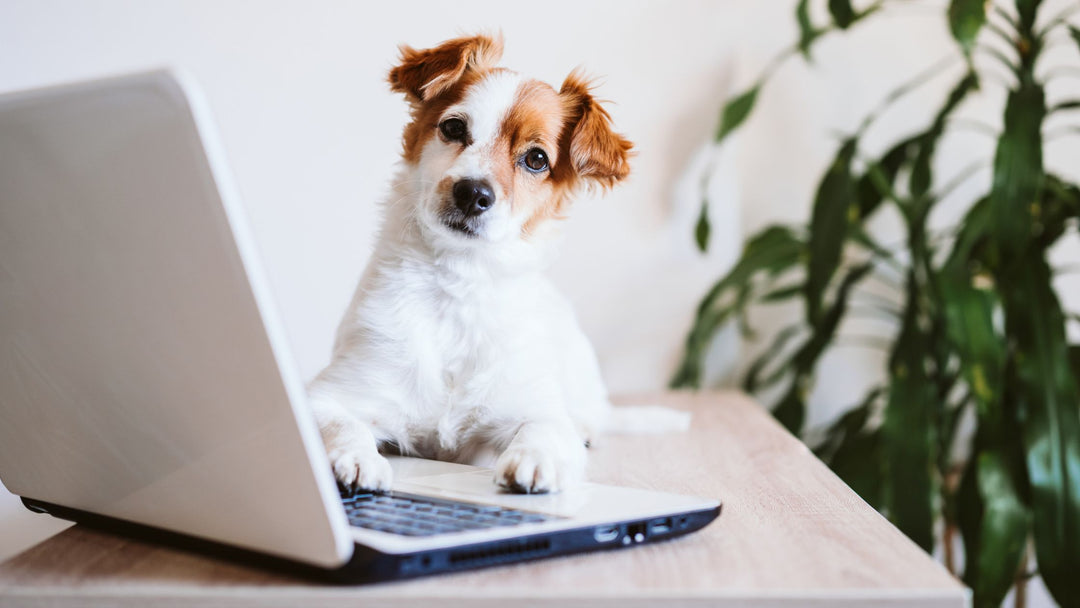
Leave a comment